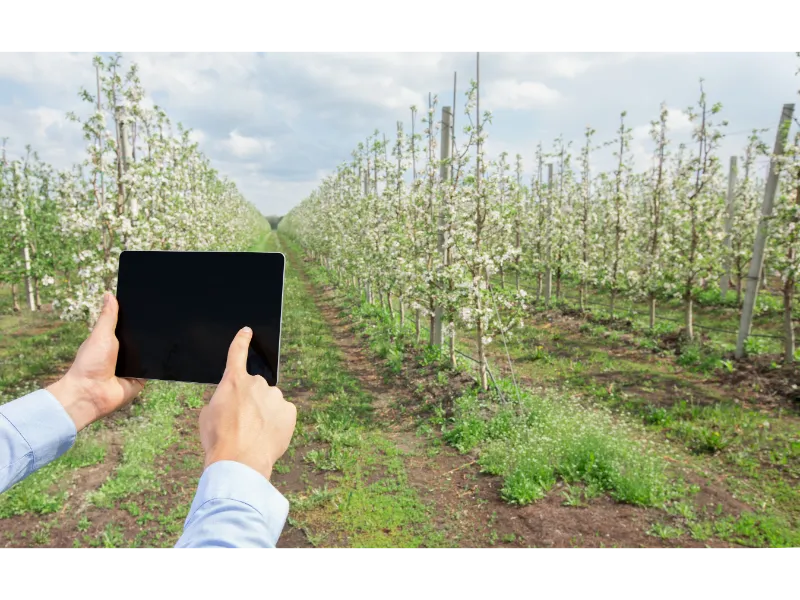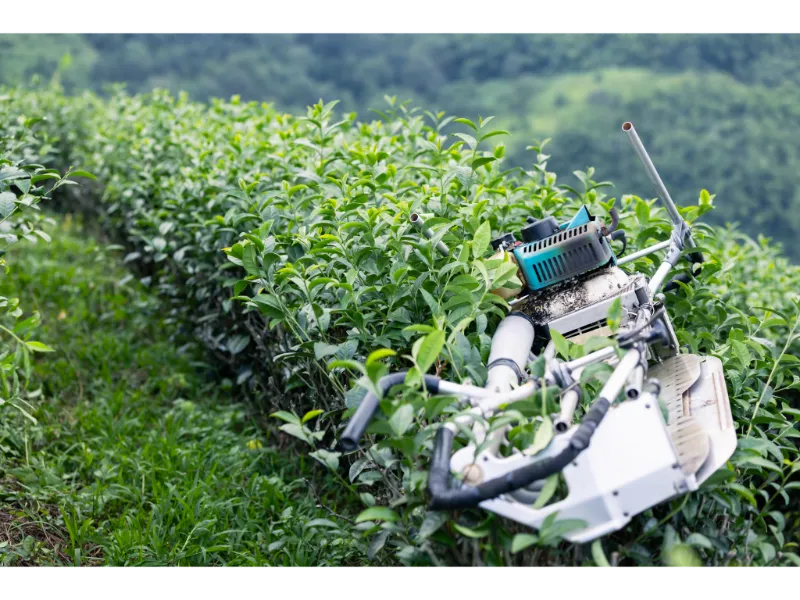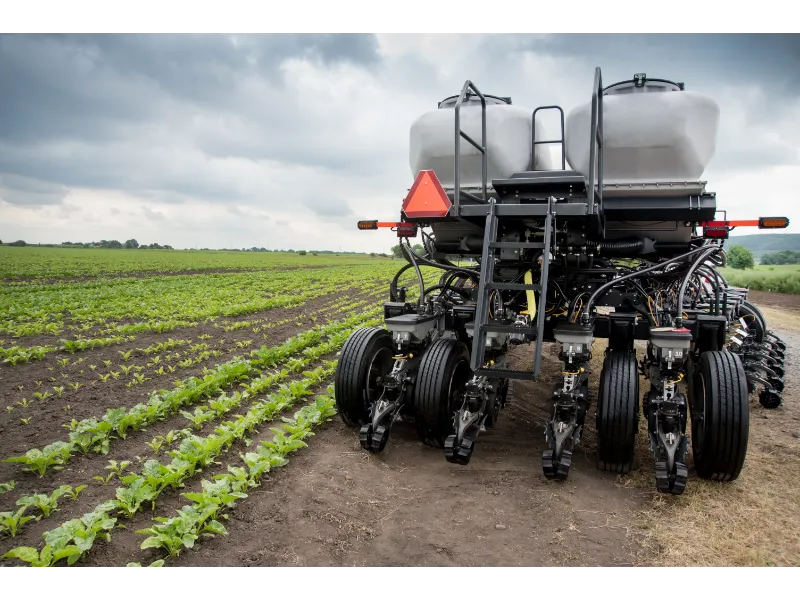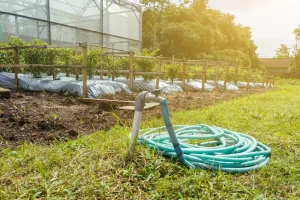What Are Smart Farming Applications? This question is important for those who want to increase agricultural productivity. For this reason, integrated solutions using digital technologies have been developed. In addition, sensor-supported irrigation systems are becoming widespread. In this case, efficient irrigation is provided thanks to soil moisture sensors. Furthermore, water waste is largely prevented. Therefore, resource use is more sustainable. Furthermore, satellite mapping analyzes field data. This enables accurate fertilization and pesticide use. In addition, drones scan fields. This ensures regular monitoring of plant growth. Pests are detected early. This prevents yield loss. Harvest timing is planned correctly. This ensures maximum yield. Moreover, smart tractors reduce labor needs. This saves both fuel and time. Furthermore, farm management software digitizes processes. This simplifies record-keeping and planning. The answer to the question “What are Smart Farming Applications?” lies in these solutions.
Table of Contents
- How to Use Smart Farming Applications?
- How to Implement Smart Farming Technologies
- Robotic Farming Tools
- Operating Management Systems
- Automatic Fertilization Systems
- Conclusion
- Frequently Asked Questions
How to Use Smart Farming Applications?
Smart farming applications aim for efficient production using modern technologies. Therefore, sensor systems measure soil moisture. Additionally, weather stations collect environmental data. In this case, irrigation and fertilization planning is optimized. Furthermore, field imaging is performed using drones. This way, diseases and pests are detected early. Furthermore, artificial intelligence analyses provide yield estimates. This accelerates decision-making processes. Additionally, satellite imagery is used for field monitoring. This enables effective monitoring of large areas. Moreover, GPS-enabled tractors enable precision farming. This minimizes resource usage. Furthermore, mobile applications provide farmers with real-time information. This digitizes production processes.

How to Implement Smart Farming Technologies
Smart farming technologies should be implemented in a planned and data-driven manner. Therefore, field analysis should be performed first. Additionally, soil moisture and pH values should be measured. In this case, the correct sensor systems should be installed. Furthermore, satellite-supported mapping data should be analyzed. In this way, agricultural decisions are made based on data. Weather stations should also be installed. This allows climate variability to be monitored in advance. Furthermore, automatic irrigation systems should be integrated. This optimizes water consumption. Additionally, fertilization processes should be supported by software. This reduces chemical use. Furthermore, imaging should be performed using drones. This allows plant health to be monitored regularly. In addition, real-time information should be accessible via mobile applications.

Robotic Farming Tools
Robotic agricultural vehicles have been developed to increase the efficiency of modern agriculture. Therefore, they save time and labor. In addition, precise operations can be performed with automated systems. In this case, the error rate is significantly reduced. Furthermore, seed planting and fertilization processes are automated. Thus, standards rise. Robots track plant health. Early intervention is possible. Furthermore, special systems control weeds. In this way, pesticide use decreases. Furthermore, harvesting is done quickly and consistently. This minimizes product loss. Data collection systems also enable analysis. Consequently, decisions are based on scientific evidence. Environmental impacts are better managed. This supports sustainable production. Human errors are also largely prevented.

Operating Management Systems
Operating management systems offer digital solutions to increase agricultural productivity. As a result, production processes become more planned and systematic. Additionally, real-time monitoring is enabled through sensor data. This allows for timely intervention. Furthermore, processes such as irrigation and fertilization are automated. This prevents resource waste. Climate conditions are also analyzed to determine appropriate strategies. Consequently, productivity is maximized. Furthermore, reporting features facilitate decision-making processes. In this case, the producer ensures more effective management. Moreover, all data is collected in a central system. This allows for retrospective analysis. Furthermore, sustainable agricultural policies are supported. Consequently, environmental impacts are better controlled. In addition, the systems offer remote management capabilities.

Automatic Fertilization Systems
Automatic fertilization systems are an important technology that increases efficiency in agricultural production. Therefore, fertilizer needs are met at the right time. In addition, unnecessary fertilizer use is prevented. In this case, costs are reduced and the environment is protected. Furthermore, sensor-supported systems analyze soil data. In this way, fertilization is tailored to the needs of the plant. Furthermore, automation minimizes human error. Consequently, the production process becomes safer. It also saves time and reduces labor. This makes agriculture more sustainable. Moreover, the systems are easily programmable. This allows customized settings for crops. They also offer remote control. This benefits large areas. Moreover, yield increase is observable. In this case, ROI accelerates. Furthermore, automatic fertilization supports modern agriculture. In this way, digital farming grows. Additionally, environmental impacts are managed. Therefore, production becomes more conscious.

Conclusion
As a result, technological solutions are important for increasing productivity in agriculture and reducing environmental impacts. Therefore, the question “What are Smart Farming Applications?” is frequently discussed today. In addition, with these applications, resource use in agricultural production becomes more efficient. In this case, both producer profits increase and sustainable agriculture is supported. Moreover, real-time data can be collected in the field using sensors, drones, and software. This allows for more informed decision-making processes. Therefore, the answer to the question “What are Smart Farming Applications?” is of great importance in shaping both the present and the future.
Frequently Asked Questions
What are smart farming applications? Smart farming refers to modern applications that aim to increase agricultural productivity using digital technologies.
How are smart farming applications used? Agricultural processes are managed remotely using sensors, satellites, drones, and software systems.
What do robotic farming tools do? These tools perform tasks such as harvesting, planting, and fertilizing automatically and precisely.
What do operational management systems do in agriculture? They enable the planning and control of the entire production process, from the field to the data.
How do automatic fertilization systems work? Fertilizer is automatically dosed and applied according to the plant’s needs using sensors.
Who can use smart farming technologies? Farmers, agricultural consultants, cooperatives, and large-scale agricultural businesses can use these technologies.
What is the cost of these systems? Installation and equipment costs vary, but they provide savings in the long term.
Are smart irrigation systems also included? Yes, sensor-based irrigation systems are also an important part of smart farming technologies.
How are data collected and analyzed? Data collected via IoT devices are analyzed in cloud-based systems to provide decision support.
Do these technologies contribute to the environment? Yes, they reduce resource waste, support environmentally friendly production, and lower the carbon footprint.








